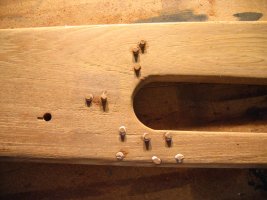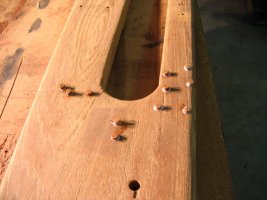Hello VIkings
A day of sanding with 80 to 100 then finally 220 grit.The wood is finally as smooth as it is going to get.
I spoke with a buddy of mine ,who refinishes boats for a living, as to what to do with the various screw holes left from the PO. Simple answer: fix them!!5/16 bungs should do the trick.
stay tuned
Capt Bill
On Porpoise
74 E35
Channel Islands Harbor
A day of sanding with 80 to 100 then finally 220 grit.The wood is finally as smooth as it is going to get.
I spoke with a buddy of mine ,who refinishes boats for a living, as to what to do with the various screw holes left from the PO. Simple answer: fix them!!5/16 bungs should do the trick.
stay tuned
Capt Bill
On Porpoise
74 E35
Channel Islands Harbor



